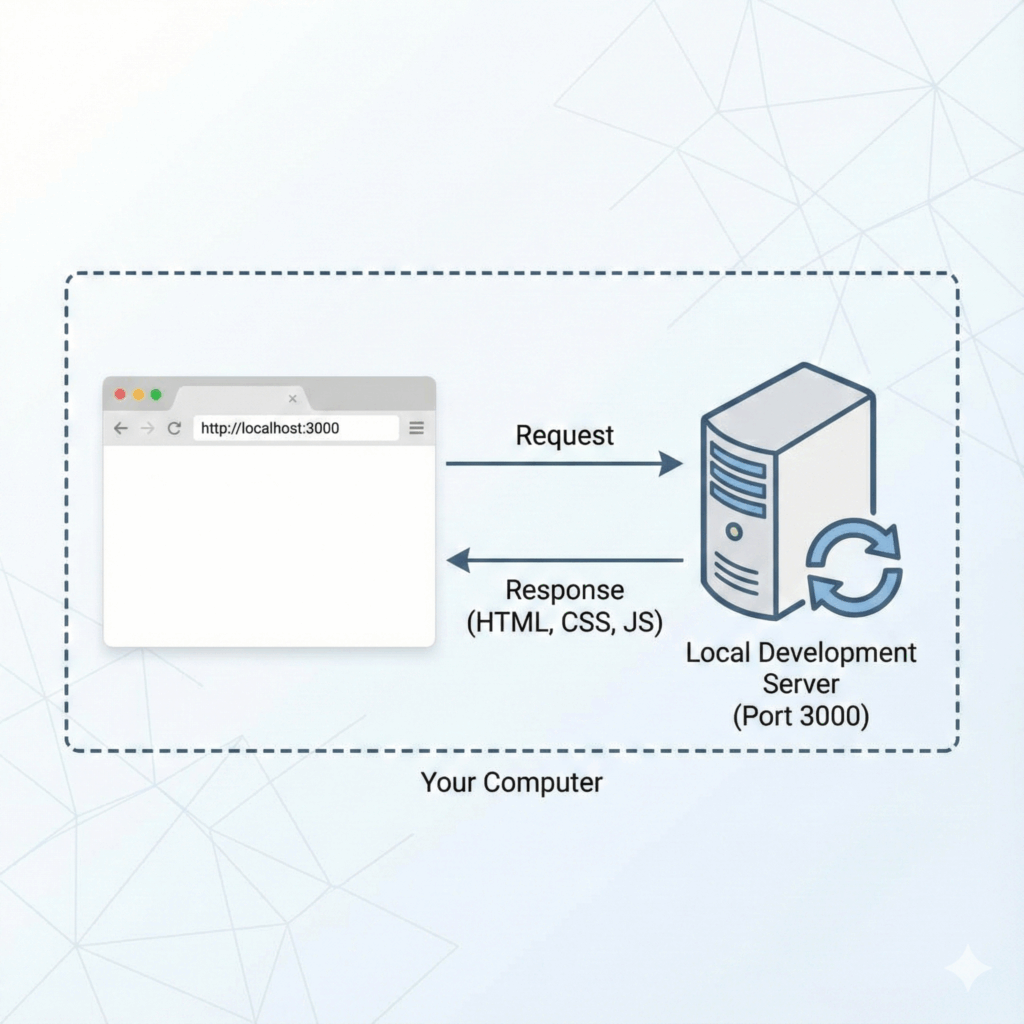MySQL Workbench is a comprehensive tool designed for database architects, developers, and DBAs. It provides an intuitive interface for managing MySQL databases, enabling you to execute SQL queries, design databases, and administer servers with ease. However, one common issue users often encounter is the dreaded “Unable to Connect to Localhost” error.
This error can be frustrating and impede your workflow. It typically occurs when MySQL Workbench cannot establish a connection to the MySQL server running on your local machine. Various factors might contribute to this problem, including server misconfigurations, authentication issues, or even firewall settings.
In this article, you’ll find a step-by-step guide tailored to troubleshoot and resolve the “unable to connect to localhost” issue in MySQL Workbench. Whether you’re a novice or an experienced user, this guide aims to provide clear instructions to help you get back on track quickly.
Understanding the ‘Unable to Connect to Localhost’ Error
Experiencing connection issues with MySQL Workbench is a common hurdle. The error message “Unable to Connect to Localhost” often signifies underlying problems that need addressing.
Causes of the Error
Several factors can lead to this issue:
- MySQL Server Not Installed: Without the server, MySQL Workbench cannot establish a connection.
- Service Not Running: The MySQL service may be stopped or not set to start automatically.
- Incorrect Configuration Settings: Misconfigured hostname, port, username, or password settings.
- Authentication Problems: Issues like socket authentication can prevent successful connections.
- Firewall Restrictions: Security settings might block the necessary ports and services.
Common Symptoms and Error Messages
Recognizing the symptoms helps in troubleshooting:
- Error 2003 (HY000): Can’t connect to MySQL server on ‘localhost’ (10061)
- MySQL Workbench could not detect any MySQL servers running on localhost
- Access denied for user ‘root’@’localhost’ (using password: YES/NO)
- Persistent prompts for passwords despite correct credentials.
Understanding these causes and symptoms equips you with the knowledge needed to troubleshoot effectively.
Step 1: Verify Your MySQL Server Installation
Verifying your MySQL server installation is the first step in solving the ‘Unable to Connect to Localhost’ error. Ensuring that the MySQL Database Server is properly installed on your machine is crucial.
Guidelines to Check Installation:
1. Windows Control Panel:
- Open the Control Panel.
- Navigate to Programs and Features.
- Look for MySQL Server in the list of installed programs.
2. Command Line Verification:
- Open Command Prompt.
- Type
mysql --versionand press Enter. - The command should return the version of MySQL installed if it’s properly set up.
Installation Methods:
1. XAMPP:
An easy-to-use installer that packages Apache, MySQL, PHP, and Perl. It simplifies the installation process.
- Download XAMPP from Apache Friends.
- Run the installer and follow the prompts.
- Ensure MySQL is selected during the installation process.
2. Direct Download from Official Website:
For users who prefer a standalone installation.
- Visit MySQL’s official website.
- Choose your operating system and download the appropriate installer.
- Follow the installation instructions provided on the website.
After verifying or installing MySQL, you can proceed to check if the service is running. This ensures that your setup is ready for connection attempts via MySQL Workbench.
Step 2: Check If the MySQL Service is Running
Ensuring that the MySQL service is running is crucial for a successful connection using MySQL Workbench. This can be easily checked through the Windows Control Panel and Services management console.
Verifying MySQL Service Status
- Open Windows Control Panel:
- Press
Windows + Rto open the Run dialog. - Type
controland press Enter.
- Navigate to Administrative Tools:
- Click on System and Security.
- Select Administrative Tools.
- Access Services Management Console:
- Double-click on Services to open the Services management console.
- Locate MySQL Service:
- Scroll down to find MySQL or MySQL57 (the number may vary based on your version).
- Check the Status column to see if it is running.
Starting MySQL Service
If the service is not running:
- Start the Service:
- Right-click on the MySQL service.
- Select Start from the context menu.
Changing Startup Type Settings
To ensure that MySQL starts automatically with your system:
- Modify Startup Type:
- Right-click on the MySQL service and select Properties.
- In the Properties window, find the Startup type dropdown menu.
- Select Automatic from the options.
- Apply Changes:
- Click Apply, then OK to save your settings.
By following these steps, you can verify that your MySQL service is running and set it up for automatic startup, which can help you avoid encountering connection issues in MySQL Workbench related to service status.
Step 3: Configure Connection Settings in MySQL Workbench Correctly
To establish a successful connection to your MySQL server using MySQL Workbench, correct configuration settings are crucial. Begin by launching MySQL Workbench and following these steps:
1. Open the MySQL Workbench
- Navigate to the Database menu and select Manage Connections.
2. Create a New Connection
- Click on the New button to create a new connection profile.
3. Configure Connection Parameters
- Connection Name: Assign a recognizable name for your connection.
- Hostname: Enter
127.0.0.1orlocalhost. This points to your local machine. - Port: Input
3306, which is the default port for MySQL.
4. Set Authentication Details
- Username: Typically, this is
root. - Password: If you’ve set a password for the root user, enter it here. Otherwise, leave it blank if no password is configured.
5. Test Connection
Click on the Test Connection button to verify that all settings are correct and that MySQL Workbench can successfully connect to the server.
6. Save and Connect
If the test is successful, click on OK to save the connection profile. Select your newly created connection profile from the list and click Connect.
Proper configuration of these settings ensures that MySQL Workbench can communicate with your local MySQL server without issues. Any discrepancies in hostname or port settings may result in connectivity failures, so double-check these parameters if you encounter problems.
Step 4: Troubleshoot Authentication Issues with Your MySQL Server
Socket authentication can sometimes prevent MySQL Workbench from connecting to your local MySQL server. This method uses the system’s user credentials for authentication, which can cause compatibility issues, especially on Ubuntu systems.
To check if socket authentication is causing the issue:
- Open a terminal or command prompt.
- Log into the MySQL shell using the following command: bash sudo mysql -u root
- Run this query to see the current authentication method for the root user: sql SELECT User, Host, plugin FROM mysql.user;
If the plugin column shows auth_socket for the root user, you may need to switch to native password authentication.
Steps to revert back to native password authentication:
- In the MySQL shell, execute: sql ALTER USER ‘root’@’localhost’ IDENTIFIED WITH mysql_native_password BY ‘your_password’;
- Reload the grant tables with: sql FLUSH PRIVILEGES;
- Exit the MySQL shell: bash exit
After making these changes, try reconnecting with MySQL Workbench using your new password. This should help resolve any connection issues related to socket authentication.
Key Points:
- Socket Authentication: Uses system credentials and may cause compatibility issues.
- Native Password Authentication: More universally compatible and easier for tools like MySQL Workbench.
Ensuring correct authentication settings can significantly improve your chances of a successful connection.
Additional Considerations: Firewall, Security Settings, and Compatibility Issues
Firewall rules and security settings can often block connections to localhost. To ensure your firewall isn’t the problem:
For Windows users:
- Open the Control Panel.
- Go to System and Security > Windows Defender Firewall.
- Select Allow an app or feature through Windows Defender Firewall.
- Make sure that MySQL is allowed on both private and public networks.
For Linux users:
- Check the existing rules using
sudo iptables -L -v -n. - Add a rule to allow MySQL traffic with
sudo iptables -A INPUT -p tcp --dport 3306 -j ACCEPT.
Security settings might also interfere with the connection. On some systems, SELinux or AppArmor may prevent connections. You can temporarily disable these security features to test if they are causing the issue.
Compatibility issues between different versions of MySQL Workbench and the server could lead to connection errors. Ensure that your MySQL Workbench version aligns well with your server version:
- MySQL Server 8.0: Works best with MySQL Workbench 8.0.
- Older MySQL Servers: Might require older versions of MySQL Workbench for optimal compatibility.
Regular updates can help in resolving these issues as developers constantly improve compatibility with newer versions.
bash
Example command to check service status on Linux
sudo systemctl status mysql
Example command to open MySQL port on Linux iptables
sudo iptables -A INPUT -p tcp –dport 3306 -j ACCEPT
Ensuring proper configuration and regular updates prevents many common connectivity issues in MySQL Workbench.
Conclusion
Experiencing challenges while connecting MySQL Workbench to localhost can be frustrating, but don’t lose hope. With the right troubleshooting steps, you can overcome these issues. By verifying your server installation, ensuring the service is running, configuring your connection settings accurately, and addressing potential firewall and compatibility problems, you’ll be well on your way to fixing MySQL Workbench errors.
Remember: Persistence is key. Each step brings you closer to a seamless and efficient database management experience. Happy troubleshooting!




